
Locksmithing is the science and art of making and defeating locks. Locksmithing is a traditional trade and in many countries requires completion of an apprenticeship. The level of formal education legally required varies from country to country from none at all, to a simple training certificate awarded by an employer, to a full diploma from an engineering college, in addition to time spent working as an apprentice.

Linus Yale Jr. was an American mechanical engineer, manufacturer, and co-founder with millionaire Henry R. Towne of the Yale Lock Company, which became the premier manufacturer of locks in the United States. He was the country's leading expert on bank locks and its most important maker. By the early 20th century, about three-quarter of all banks in America used his bank locks. He is best remembered for his inventions of locks, especially the cylinder lock, and his basic lock design is still widely distributed today, and constitutes a majority of personal locks and safes.
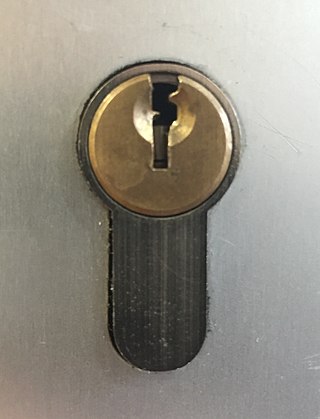
The pin tumbler lock, also known as the Yale lock after the inventor of the modern version, is a lock mechanism that uses pins of varying lengths to prevent the lock from opening without the correct key.

A disc tumbler or disc detainer lock is a lock composed of slotted rotating detainer discs. The lock was invented by Finnish founder of Abloy, Emil Henriksson (1886–1959) in 1907 and first manufactured under the Abloy brand in 1918.
Assa Abloy AB is a Swedish Group whose offerings include products and services related to locks, doors, gates, and entrance automation. Related products and services include controlling access and confirming identities with keys, cards, tags, mobile, and biometric identity verification systems.

A lock is a mechanical or electronic fastening device that is released by a physical object, by supplying secret information, by a combination thereof, or it may only be able to be opened from one side, such as a door chain.
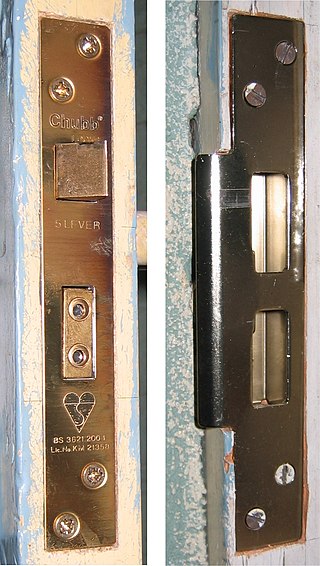
A mortise lock is a lock that requires a pocket—the mortise—to be cut into the edge of the door or piece of furniture into which the lock is to be fitted. In most parts of the world, mortise locks are found on older buildings constructed before the advent of bored cylindrical locks, but they have recently become more common in commercial and upmarket residential construction in the United States. The design is widely used in domestic properties of all vintages in Europe.
Yale & Valor was a company in Birmingham that manufactured locks and gas fires. It was listed on the London Stock Exchange.
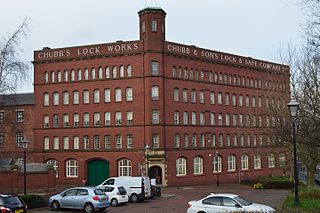
Chubb Locks is a former brand name of the Mul-T-Lock subsidiary of the Assa Abloy Group, which manufactures locking systems for residential, secure confinement and commercial applications. When the brand licence expired in 2010 the name ceased to be used, with the same locks sold as Yale or Union locks.

The Lock Museum of America houses an extensive lock collection that includes 30 early era time locks, escutcheon plates from safes, a large number of British safe locks, door locks, padlocks, handcuffs and keys, and more. Located in Terryville, Connecticut, the museum is directly across from the original site of the Eagle Lock Company, founded in 1854.
Medeco, a subsidiary of the Swedish Assa Abloy Group, is a lock manufacturer located in Roanoke County, Virginia, United States.
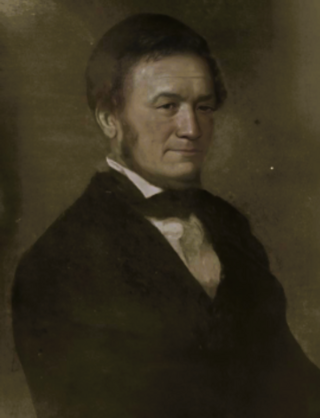
Linus Yale was an American inventor, manufacturer of bank locks, and 1st Mayor of Newport, New York. His patents were signed by President Andrew Jackson. His son, Linus Yale Jr., would later found the Premier manufacturer of locks in the United States, and be a pioneer in the American lock industry through the Yale Lock Company.

The South End of Stamford, Connecticut is a neighborhood located at the southern end of the city, just south of the Downtown neighborhood. The South End is a peninsula bordered by Downtown Stamford and Interstate 95 to the north and almost totally by water on all other sides, with few streets linking it to other neighborhoods.

A wafer tumbler lock is a type of lock that uses a set of flat wafers to prevent the lock from opening unless the correct key is inserted. This type of lock is similar to the pin tumbler lock and works on a similar principle. However, unlike the pin tumbler lock, where each pin consists of two or more pieces, each wafer in the lock is a single piece. The wafer tumbler lock is often incorrectly referred to as a disc tumbler lock, which uses an entirely different mechanism.

Kwikset is an American lock and lockset manufacturer owned by Assa Abloy. Originally Gateway Manufacturing Company, Kwikset was founded in California in 1946 by Adolf Schoepe, and Karl Rhinehart.

Bilock is a high-security keying system designed and manufactured by Australian Lock Company. It is advertised to be bump-proof, pick-resistant, and drill-resistant. The Bilock cylinder uses a patented locking system with two sidebars, 12 pins, and 12 springs. In the New Generation Bilock, a trigger pin has been added to increase security and extend the registered design of the product. The key design is a U-shape profile with six cuts on each side of the key, along with a central roller to activate the trigger pin in the front and center of the cylinder.

A magnetic keyed lock or magnetic-coded lock is a locking mechanism whereby the key utilizes magnets as part of the locking and unlocking mechanism. Magnetic-coded locks encompass knob locks, cylinder locks, lever locks, and deadbolt locks as well as applications in other security devices.

A lockset is the hardware and components that make up the locking or latching mechanism that can usually be found on a door or other hinged object but can also include sliding doors and dividers. The components of a lockset can include the door handles, latch bolt, dead bolt, face plate, strike plate, escutcheon, thumbturn, push button, turn button, and other trim. The lockset and associated hardware typically defines a door's function and how a user could access the two adjacent spaces defined by the opening associated with the lockset.
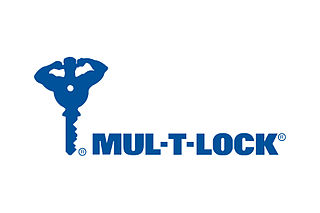
Mul-T-Lock is an Israeli company that develops padlocks, combination locks and related security products. it was founded in 1973 by Moshe Dolev and Avraham Bahry it is a subsidiary of Assa Abloy.

VingCard Elsafe, whose origin was in Moss, Norway, is an international producer of hotel locking systems, electronic in-room safes and energy management systems. After inventing the first mechanical hole card operated lock in 1976, VingCard was acquired in 1994 by ASSA ABLOY, and merged with the electronic safe producer Elsafe to form VingCard Elsafe in 2006. Since 2015 VingCard Elsafe is not an operating company, but a product brand within ASSA ABLOY Global Solutions. In 2024, Vingcard is re-launched.





















